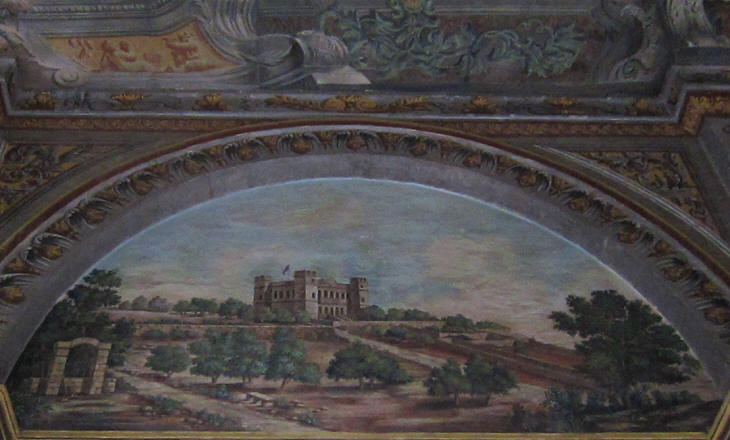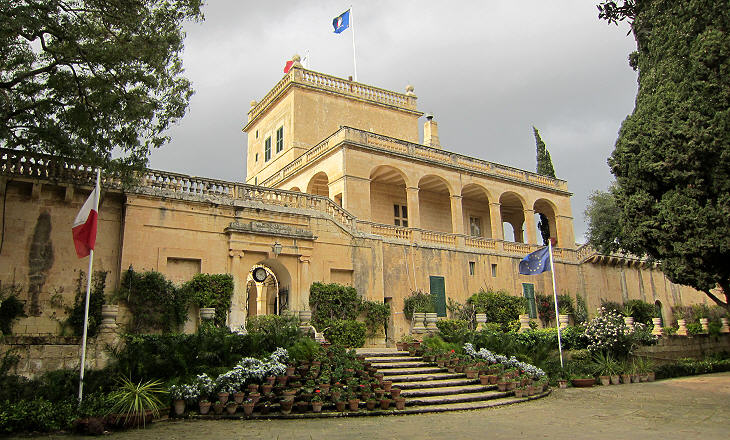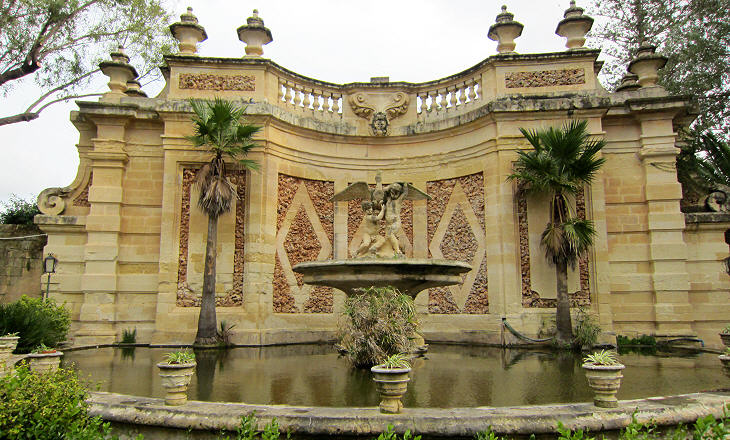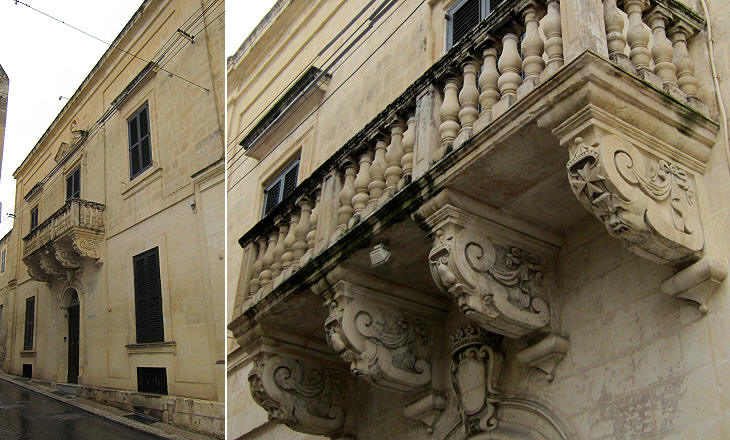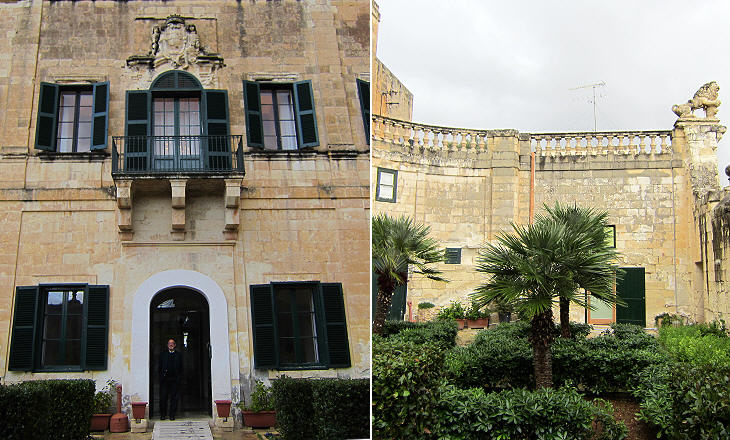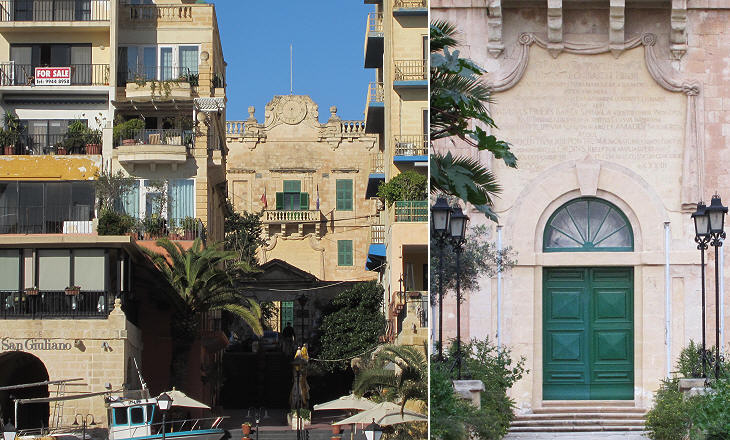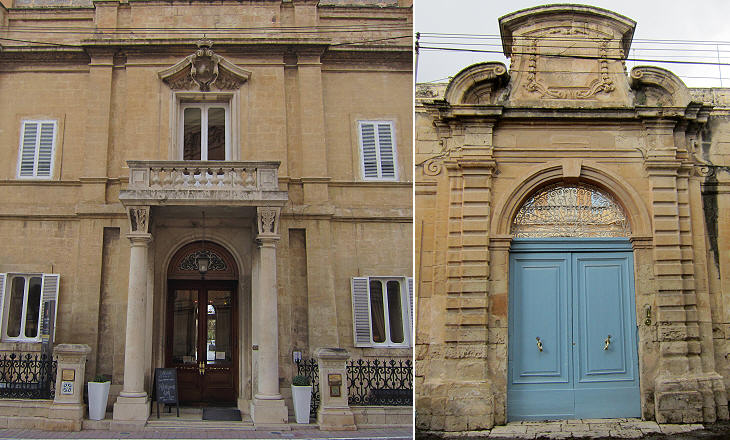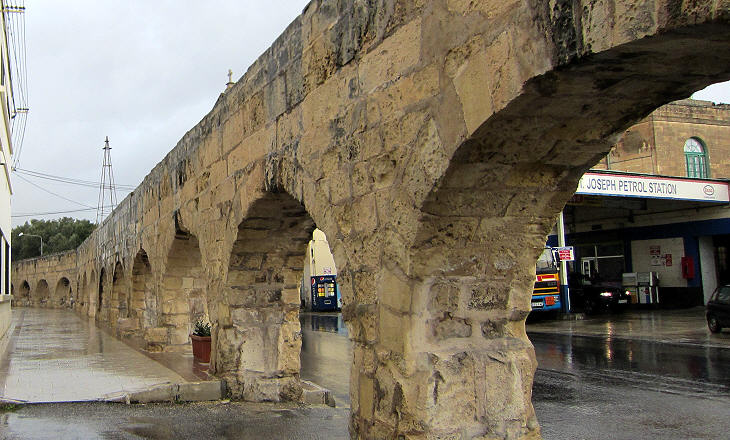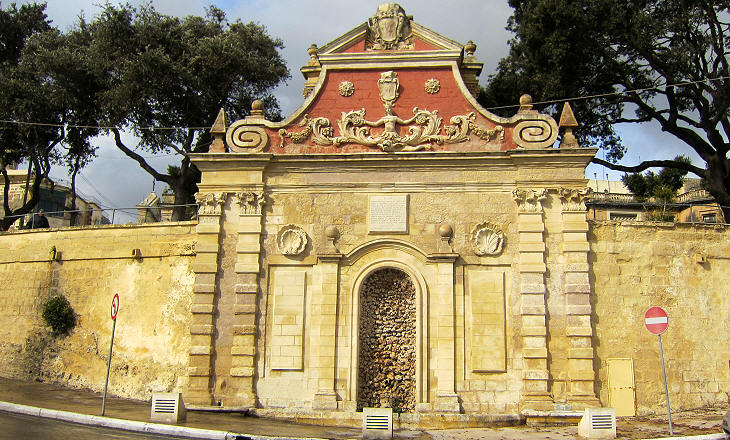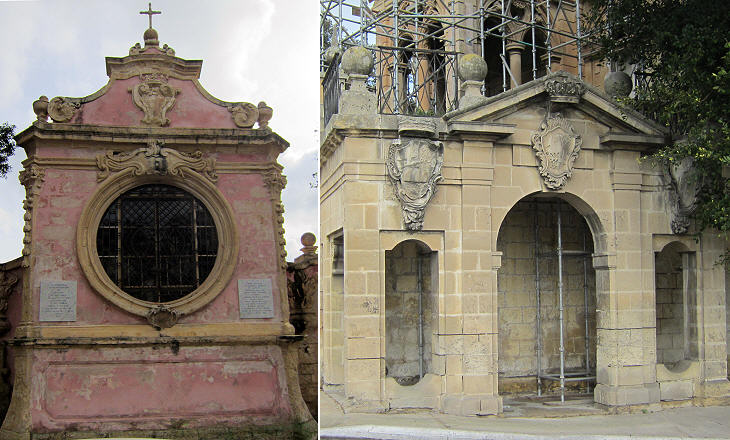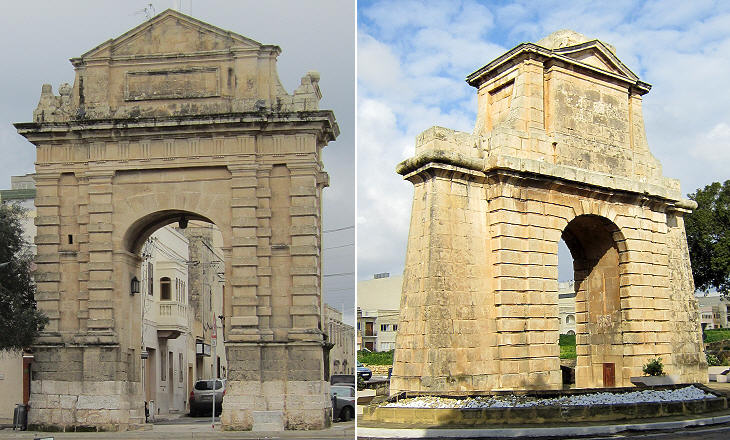  What's New! Detailed Sitemap All images © by Roberto Piperno, owner of the domain. Write to romapip@quipo.it. Text edited by Rosamie Moore. Page added in June 2012. |
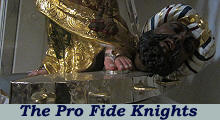 - Other monuments in the minor towns - Other monuments in the minor towns(detail of a statue of St. Catherine of the Wheel in the parish church of Zejtun) The Knights Hospitallers were bound by vows of celibacy, obedience and poverty. On Rhodes they lived in hostels and during their first years on Malta they did the same at Borgo. After the 1565 failed Ottoman attempt to seize the island and the foundation of Valletta the vow of poverty started to be complied with in a rather lax way.
In 1588 Grand Master Verdale was appointed cardinal by Pope Sixtus V. Verdale was aware that almost all the cardinals who lived in Rome spent the summer in their countryside villas and he therefore decided to build a residence in the only woodland of Malta in the south-western part of the island. The building has the aspect of a small fortress because sudden corsair raids could not be ruled out. It still serves its original purpose as the summer residence of the President of the Republic.
The example of Grand Master Verdale was followed by some of the wealthiest knights including Antoine de Paule. He was elected Grand Master in 1623, but he preferred to enlarge and embellish his villa near Attard which is within easy reach from Valletta, rather than living at Verdala Palace. Today the main building is the usual residence of the President of the Republic, but the gardens are normally open to the public.
Villa San Anton was modified by other Grand Masters and by the British Governors, but a section of the gardens retains its original design. The wall behind the fountain is decorated in a way which is typical of Roman villas, such as Villa d'Este at Tivoli or Villa Farnese at Caprarola.
Not all the countryside residences of the Knights have retained the gardens which surrounded them. Today the small lodge which belonged to Grand Master Perellos at Zejtun is part of a series of rather anonymous houses in the outskirts of the town and only the elaborate balcony with the heraldic symbol of Perellos evokes the former importance of the building.
Grand Master Vilhena placed his coats of arms on many monuments at Mdina, Fort Manoel, Valletta and other locations. They were often supported by roaring lions. He did so at his villa at Hamrun too, but the lions played a trick on him, because the building became known as Casa Leoni, rather than as Palazzo Manoel, as Vilhena desired. Today Casa Leoni houses offices of the Ministry of Education.
The Spinola are one of the most illustrious families of Genoa. In 1688 Fra Raffaele Spinola built a villa at St. Julian's Bay, today the very heart of Malta's tourist district. Probably because of his Genoese background he chose to build the villa by the sea. Its two small boathouses have been turned into a fish restaurant - external link. In 1733 a long inscription celebrated a redesign of the building and made reference to various important personages of the early XVIIIth century including Pope Innocent XIII and Victor Amadeus II, Duke of Savoy and King of Sicily in 1713-20.
Some of the villas built in the XVIIIth century are still private properties. Usually they were significantly altered during the XIXth century to reflect changes in tastes. Current owners face high maintenance costs which they try to bear by opening the buildings to the public and by housing weddings parties and other events in the gardens.
Grand Master Alof de Wignacourt ordered the construction of an aqueduct to provide Valletta with an ample supply of water. Sections of the aqueduct can be seen near Casa Leoni (along one of the busiest roads of Malta) unfortunately marred by an unattractive background. You may wish to see some of the fountains which were built at Floriana to distribute the water.
Grand Master Vilhena greatly embellished Mdina with various monuments designed by Charles de Mondion, including an imposing fountain outside the walls of the town in the territory of the parish church of Rabat. The inscription begins with a Latin quotation from Isaiah (55) Omnes sitientes venite ad aquas (All you that thirst come to the waters).
Grand Master Vilhena built a small chapel housing a statue of St. Paul, the patron saint of Malta, on the back of the fountain. Similar to Rome's Carnival Race Malta had a bareback horse (or donkey) race with the finish line near Vilhena Fountain. Grand Master Adrien de Wignacourt built a loggia where he could watch the final phase of the race. The building bears the coat of arms of Grand Master Rohan which indicates that changes were made at the end of the XVIIIth century.
The last two Maltese Grand Masters built decorative, but rather plain arches at the entrance to towns where they had properties or of which they promoted the development. They probably had marble inscriptions which have been removed. The image used as background for this page shows one of the lions at Casa Leoni. Move to: Introductory Page Brief outline of the history of Malta before 1530 The Grand Masters of the XVIth century The Grand Masters of the XVIIth century The Grand Masters of the XVIIIth century Valletta: the fortifications Valletta: the churches Valletta: other monuments Borgo/Cittą Vittoriosa (Birgu) Senglea (Isla) Cittą Cospicua (Bormla) Floriana Other Fortifications Cittą Vecchia (Mdina) Gozo Island Churches in the minor towns Rome and Malta  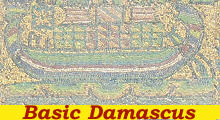 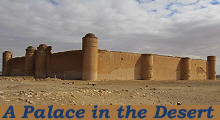 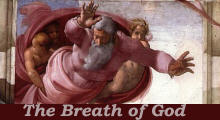 |
